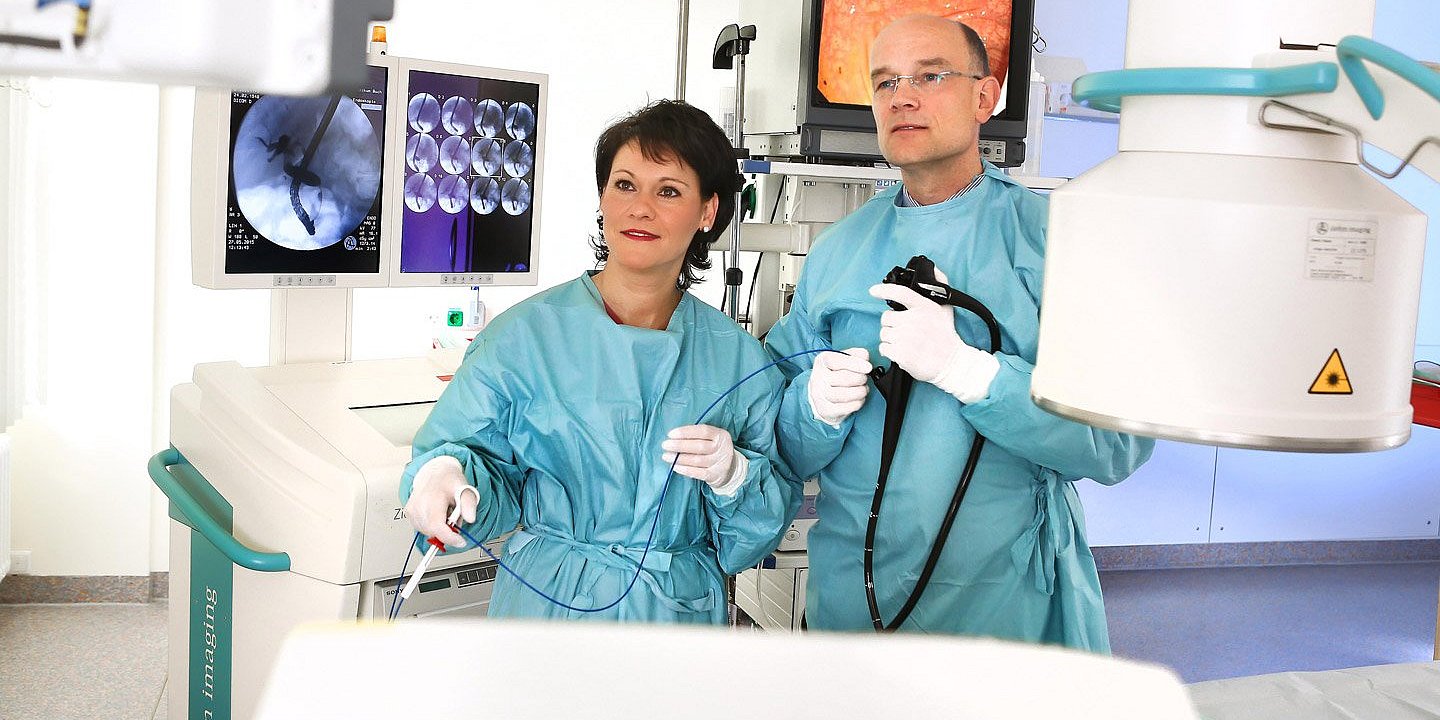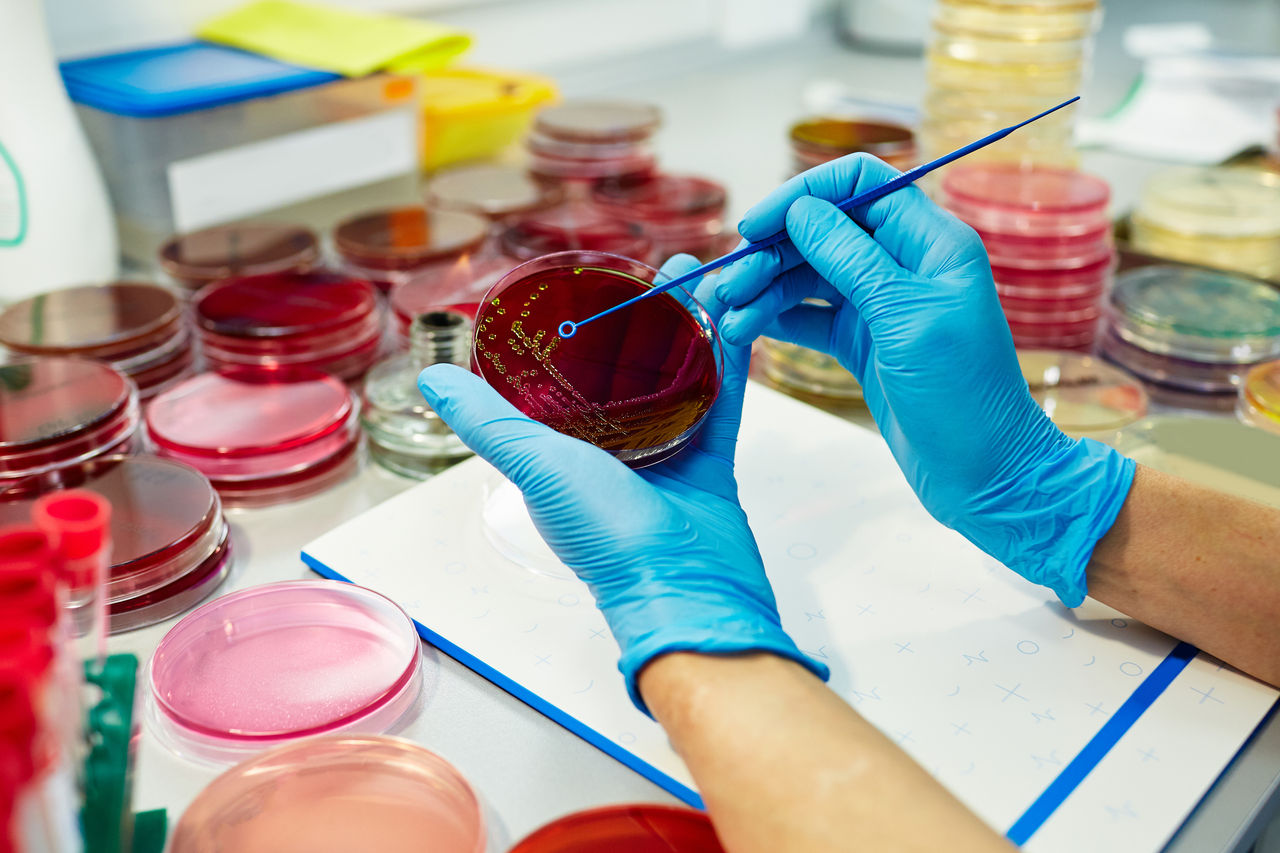
Screening of the colon - What is the procedure for a colonoscopy?
Colonoscopy is one of the most important examinations in colorectal cancer screening. And yet more than 27,000 people worldwide die every year as a result of colorectal cancer. We explain what a colonoscopy is and why it is so important as a preventive measure.
Colorectal cancer is the third most common tumor disease in men and the second most common in women. But this does not have to be the case. Colonoscopy is considered the optimal screening test for detecting and treating colorectal cancer at a very early stage. The earlier it is detected, the better the chances of recovery.
What is a colonoscopy?
"A colonoscopy is an examination of the large intestine using an endoscope," explains Prof. Dr. Frank Kolligs, Head of Internal Medicine and Gastroenterology at Helios Klinikum Berlin-Buch. "The complete endoscopy of the colon and rectum is known in medicine as a colonoscopy," adds Dr. Kolligs. After the bowel has been prepared and emptied, a complete examination of the colon is carried out. Tissue samples can also be taken and polyps removed.
"It is possible for the patient to be awake during the colonoscopy. However, we usually administer sedation or light anesthesia as part of the exam, so our patients are not aware of the colonoscopy," Dr. Kolligs explains.
When is a colonoscopy performed?
A colonoscopy is performed as a precautionary measure or due to symptoms.
- for prevention:
Colonoscopy is performed to detect and remove any polyps that may be present. "Polyps can be the first precursors of colorectal cancer," says Dr. Kolligs. It is important to perform the screening when the patient is symptom-free.
- for complaints:
If the colonoscopy is performed due to unclear complaints, the cause should be determined. Possible complaints include blood in the stool or changes in the patient's bowel habits.
Advantages of colonoscopy compared to other diagnostic procedures
- most important examination of the digestive tract for the prevention of colorectal cancer
- Sensitive procedure to detect pathological changes in the intestine
- Good opportunity to take tissue samples
- Suitable for performing local therapies
- any abnormality in the intestine can be inspected in detail
- No radiation exposure as with a CT scan of the intestine
- Physical strain for the patient is low
What alternatives are there to colonoscopy?
If colonoscopy is not possible or the patient refuses the examination, other diagnostic procedures are available. However, only in exceptional cases, as they are less reliable. Other diagnostic procedures include:
Sigmoidoscopy
A sigmoidoscopy is a partial colonoscopy. This means that only the last part of the large intestine with the rectum is examined. Only about a third to a maximum of half of the colon is examined. In the English-speaking world, this examination is also used for screening. "In Germany, however, sigmoidoscopy is not a preventive examination, as some tumors and precancerous lesions remain undetected," says Dr. Kolligs.
Capsule endoscopy
In Germany, capsule endoscopy is mainly used to examine the small intestine. Here, the patient swallows a camera in the form of a capsule. There are special capsules for the large intestine that are used when a complete colonoscopy is not possible. This may be the case if there is an adhesion or entanglement of the colon. Capsule endoscopy also leaves some tumors and precancerous lesions undetected because the physician cannot control the camera movement.
Virtual colonoscopy
In virtual colonoscopy, the images are taken "from the outside" using computed tomography (CT). This method is chosen when a complete colonoscopy is not possible. This diagnostic procedure is also less reliable than the conventional method. In addition, the patient is exposed to radiation from the CT. If abnormalities are found, this is usually followed by colonoscopy, if possible.
How does a colonoscopy work?
- Step 1: Informative discussion before colonoscopy
In the case of a colonoscopy as a precautionary measure or for diagnosis and treatment, the gastroenterologist will conduct an informative discussion with the patient. In this consultation, he or she explains the procedure of the examination and the risks associated with it. The doctor will also provide information on what can be eaten and drunk beforehand and when the bowel cleansing should begin.
- Step 2: Preparation / bowel cleansing
As a rule, most patients start bowel cleansing in the afternoon or evening before the colonoscopy. Solid food is now no longer allowed. Patients now drink a laxative solution as well as additional water and tea to completely empty and clean the bowel. For a successful colonoscopy, it is important that the patient's bowel is completely emptied and that they only defecate a yellow liquid. It is recommended to avoid grains in the diet, as in grapes, kiwi, bread or cereals, from five days before the colonoscopy. Coffee, black tea or red-colored cloudy juices should also be avoided, as they make it difficult to see inside the intestine.
- Step 3: Sedation
Anesthesia is not necessary for a colonoscopy. However, every patient can be given sedation or analgosedation ("painless twilight sleep") so that they are not aware of the examination. Sedation is particularly suitable for patients who feel anxious.
- Step 4: The colonoscopy procedure
Colonoscopy may only be performed by a gastroenterologist. For the examination, the doctors use a colonoscope. This flexible tube has a camera as well as a small light source on the head, which allows images from inside the intestine to be seen on the monitor. The entire examination usually takes 15 to 20 minutes.
First, the endoscope is advanced to the junction with the small intestine and then slowly withdrawn. If the examining doctor sees any abnormal findings during this process, samples can be taken with the biopsy forceps. Polyps are also removed directly with a snare. This can prolong the duration of the examination.
Complications only occur in rare cases. These include an intestinal wall injury with the occurrence of bleeding or perforation (perforation of tissue), cardiovascular and respiratory problems and even circulatory failure.
- Step 5: Debriefing
After the examination, the patient is first taken to the recovery room. The findings are then discussed. Samples taken are sent to the pathology department. The patient will receive further information in a follow-up report as soon as the findings are available.
The first day after colonoscopy
After the colonoscopy, patients can eat and drink as usual. Gentle behavior is not necessary in most cases. This also applies if polyps have been removed. If the examination has taken place under general anesthesia, eating should not take place until the effect has worn off.
When and how often for colonoscopy
For preventive purposes, colonoscopy is paid for by health insurance companies for men from the age of 50 and for women from the age of 55. If the findings are unremarkable, the colonoscopy should then be repeated after 10 years. It is recommended that first-degree relatives of patients with colorectal cancer or colorectal polyps undergo colonoscopy 10 years before the relative's age of onset of the disease, but no later than at the age of 50.
In case of complaints, such as blood in the stool or also changes in bowel habits, a colonoscopy should always be performed. In this case, the doctor prescribes a colonoscopy for clarification.
When to perform a colonoscopy in children?
If symptoms such as unexplained diarrhea are present, a colonoscopy is also possible in children if the pediatrician deems it necessary. Colonoscopy is performed in a similar way to adults. However, young children are always given anesthesia and the examination is accompanied by an anesthesiologist.
A colonoscopy can save lives
As a preventive examination, colonoscopy is very well suited to revealing pathological changes in the bowel and thus starting treatment and therapy at a very early stage. The earlier these are detected, the better the chances of recovery. If you have symptoms, you should always consult a doctor to get to the bottom of the cause with a colonoscopy. After all, a healthy bowel affects the whole body.
Read more:
-
Prof. Dr. med. Kolligs, Chief Physician of the Department for Internal Medicine
-
About Helios Hospital Berlin Buch

